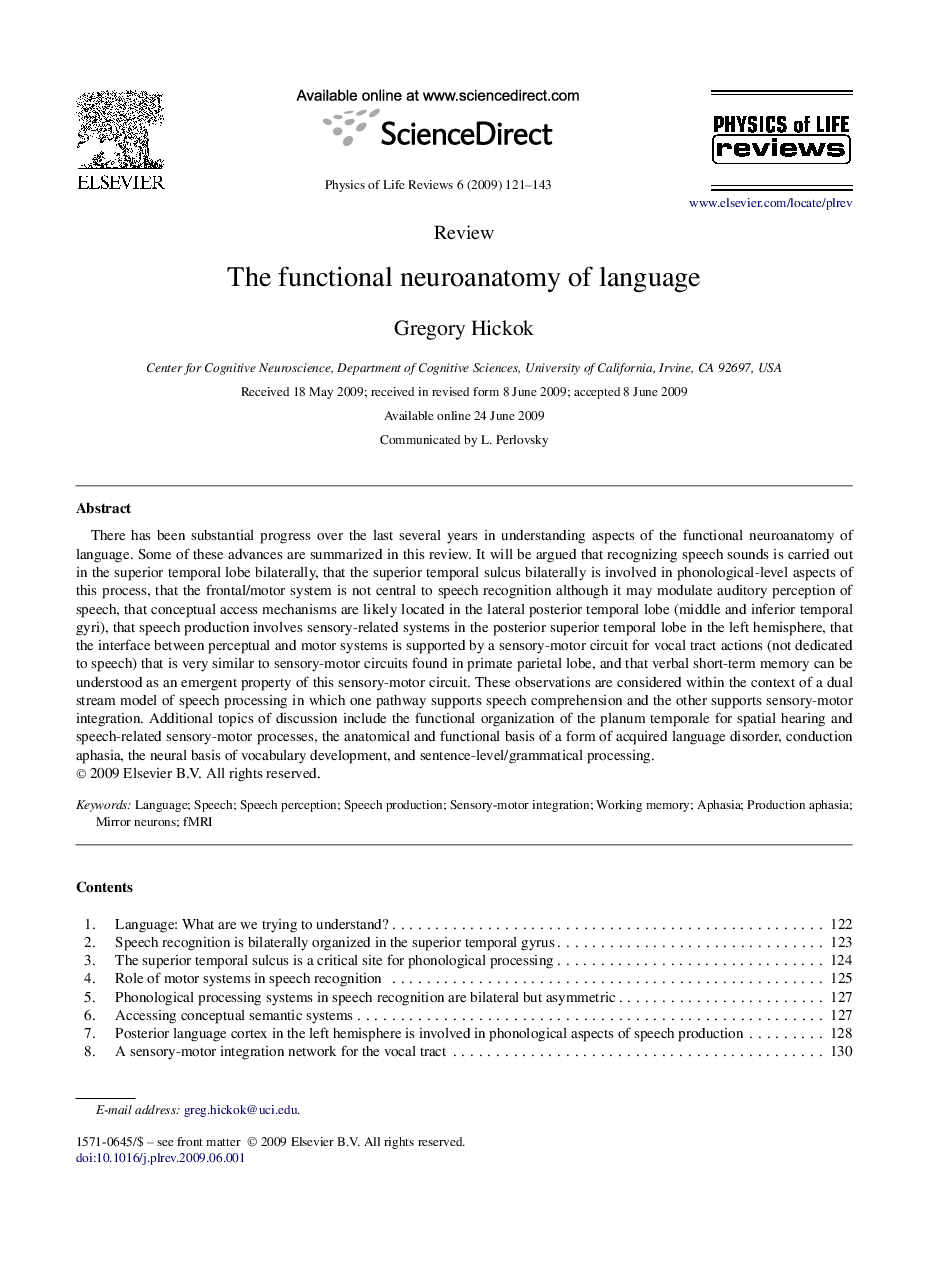| Article ID | Journal | Published Year | Pages | File Type |
|---|---|---|---|---|
| 1871075 | Physics of Life Reviews | 2009 | 23 Pages |
There has been substantial progress over the last several years in understanding aspects of the functional neuroanatomy of language. Some of these advances are summarized in this review. It will be argued that recognizing speech sounds is carried out in the superior temporal lobe bilaterally, that the superior temporal sulcus bilaterally is involved in phonological-level aspects of this process, that the frontal/motor system is not central to speech recognition although it may modulate auditory perception of speech, that conceptual access mechanisms are likely located in the lateral posterior temporal lobe (middle and inferior temporal gyri), that speech production involves sensory-related systems in the posterior superior temporal lobe in the left hemisphere, that the interface between perceptual and motor systems is supported by a sensory-motor circuit for vocal tract actions (not dedicated to speech) that is very similar to sensory-motor circuits found in primate parietal lobe, and that verbal short-term memory can be understood as an emergent property of this sensory-motor circuit. These observations are considered within the context of a dual stream model of speech processing in which one pathway supports speech comprehension and the other supports sensory-motor integration. Additional topics of discussion include the functional organization of the planum temporale for spatial hearing and speech-related sensory-motor processes, the anatomical and functional basis of a form of acquired language disorder, conduction aphasia, the neural basis of vocabulary development, and sentence-level/grammatical processing.
